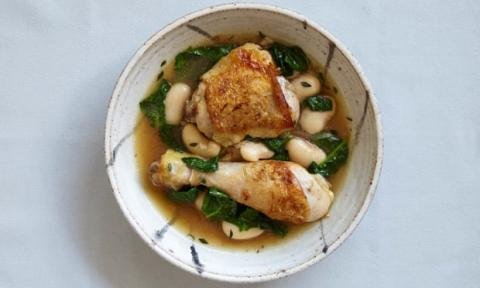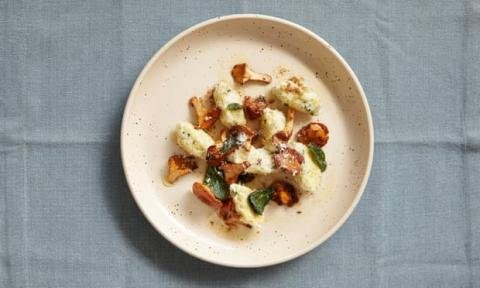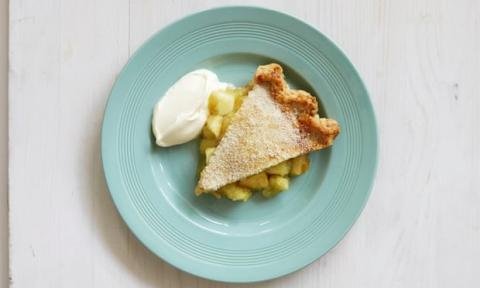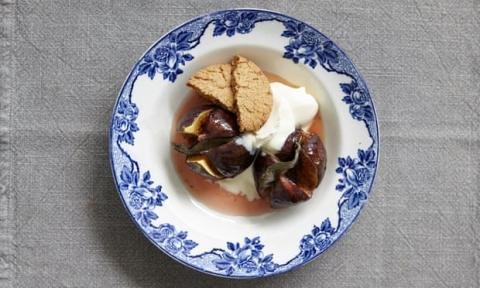
Ed Smith's one-pot brilliant chicken and margarine beans, utilizing fixings accessible at business sectors, for example, London's Borough Market Photograph: Ola O Smit for the Guardian
One-pot brilliant chicken and margarine beans (presented previously)
Prep 15 min
Cook 30 min
Serves 4
1.6– 1.8kg chicken, jointed, or 4 legs, split into thighs and drumsticks
3 tbsp vegetable oil or light olive oil
1 little onion,peeled and daintily cut
6 garlic cloves,squashed (skin on)
10 sprigs thyme
Ground get-up-and-go and squeeze of 1 lemon
300g huge leaf spinach,washed and stalks finely hacked
1 x 600g container spread beans (or 400g cooked margarine beans, in addition to 200ml cooking alcohol)
Dried up bread, to serve
You will require a substantial, overwhelming based griddle, skillet or goulash dish.
Lay the chicken pieces on a plate, season with salt and leave for five to 10 minutes.
Put the skillet on a medium-high warmth and include the oil. Lay the chicken skin side down in the container and leave to sear for 15 minutes. Following eight minutes, space the cut onion and garlic in and around the chicken. (On the off chance that utilizing an entire flying creature, broil just the thigh and leg pieces in the first place, including the bosom pieces in the meantime as the onion and garlic.)
Following 15 minutes, the chicken skin ought to be brilliant and fresh. Transform the pieces over and empty 300ml water into the skillet. This should come to fruition most of the way up and not contact the skin. Include the thyme and lemon pizzazz, and stew for 10 minutes.
Exchange the chicken to a plate and lessen the warmth to low-medium. Put the spinach in the container, tap the beans and the fluid from the jug to finish everything, and leave for three to four minutes. There ought to be 3– 4cm of fluid in the dish. This ought to be a brothy dish, so include additional water if important.
Once the spinach has shriveled, restore the chicken to the skillet (with skin still clear of the fluid). Warm for five minutes more, at that point blend in the lemon juice. Serve in wide dishes or profound plates, with bread.
Malfatti with mushrooms and sage

Prep 20 min
Chill 1 hr
Cook 20 min
Serves 4-6
250g wild mushrooms
40g spread
2 garlic cloves,peeled and finely hacked
12 sage takes off
Juice of ½ lemon
For the malfatti:
500g ricotta
4 huge egg yolks
80g '00' flour
30g picked parsley leaves, finely hacked
60g parmesan, ground
Get-up-and-go of 1 lemon, ground
½ nutmeg, finely ground
Fine semolina flour, for cleaning
Salt and dark pepper
In the first place, make the malfatti. Put the ricotta, egg yolks, flour, parsley and 40g parmesan in a bowl. Include the lemon pizzazz, nutmeg, two great squeezes every one of salt and dark pepper, and blend.
Residue a heating plate with semolina flour. Utilize a teaspoon to gather up some ricotta blend and another to enable you to shape it into an oval. You don't should be excessively exact. Rub the dumpling on to the semolina and move it to the opposite end of the plate. Rehash until you've spent all the blend – you ought to have around 20 malfatti. Include a cleaning of semolina over them, cover and chill in the cooler for 60 minutes.
Wipe the mushrooms with a moist material, remove woody bits at the base and tear extensive ones so they are a comparable size.
Convey a pot of salted water to the bubble. Drop the malfatti in and cook for a few minutes (they are done when they glide). Expel from the water with an opened spoon and put aside.
Place a griddle over a high warmth. Include 66% of the margarine and, when it's foaming, include the mushrooms, garlic, sage and a spot of salt and pepper. At the point when the mushrooms discharge their juices, include the rest of the margarine, lemon juice and a large portion of a spoon of malfatti cooking water.
Shake the container, at that point include the malfatti. Move them around a bit to warm, at that point present with the mushrooms spooned to finish everything and the rest of the parmesan.
Lincolnshire poacher cheddar crusty fruit-filled treat
Prep 45 min
Chill 2 hr 30 min
Cook 45 min
Serves 6-8

For the baked good
375g plain flour
225g cool unsalted spread, cubed
80g cool Lincolnshire poacher cheddar, cubed
A spot of salt
3 tbsp ice chest chilly water
1 tbsp juice vinegar
3 tbsp caster sugar
Entire drain, for brushing
For the filling
Juice of 1 lemon
1.2kg bramley apples
3 tbsp caster sugar, in addition to additional for sprinkling
6 cloves
Cream, to serve
You will require a 22– 23cm pie dish. Put the flour, margarine, cheddar and salt in a nourishment processor, and heartbeat until the point that it looks like breadcrumbs. Include the water and juice vinegar, and heartbeat again until the point when the cake meets up. Partition into two, one piece somewhat greater than the other, and squash each into a circle. Wrap and refrigerate for two hours.
Unwrap and roll the bigger circle between greaseproof paper until the point when it can fix the dish with a 1– 2cm shade. Rehash with the second plate and chill both cake sheets for 30 minutes.
Put the lemon squeeze in a blending dish. Peel and hack the apples, and add to the lemon juice. Sprinkle over the sugar, at that point exchange a large portion of the apples and the cloves to an overwhelming based pan. Stew on a low warmth for 15– 20 minutes, until delicate. Select the cloves, at that point blend back with the uncooked apples.
Warmth the stove to 200C/390F/gas 6. Line the dish with the bigger baked good sheet. Load up with the apples, at that point brush the edges with drain. Lay the second baked good sheet over the best, pushing the edges together. Cut three little openings in the best with a blade. Brush with drain, at that point heat for 30 minutes. Expel and brush with drain once more, and sprinkle with sugar. Heat for 15 minutes, until brilliant. Evacuate, and cool for five minutes. Present with cream.
Heated figs with ginger spread scones

Prep 15 min
Chill 20 min
Cook 30 min
Serves 6
For the biscuits
100g unsalted butter, at room temperature
90g caster sugar
100g plain flour, sifted
20g cornflour
1 tsp baking powder
1 tsp ground ginger
For the figs
10 sage leaves
6 plump fresh figs
2 tbsp warm water
3 tbsp raw honey
150g creme fraiche, to serve
Heat the oven to 200C/390F/gas 6 and line a baking tray with baking parchment.
Cream the butter and sugar in a bowl using a wooden spoon. Add the remaining ingredients, mix and refrigerate for 20 minutes. Roll a walnut-sized teaspoon of dough in your hands into a ball, repeating to make six balls using half the dough. Space them evenly on the baking tray and bake for eight minutes, until they start to turn golden. Remove and cool on the tray, then slide them off with a palette knife. Repeat with the remaining dough, then store in an airtight container.
For the figs, reheat the oven to 200C/390F/gas 6. Put four of the sage leaves in the base of an ovenproof dish that will fit the figs. Cut a cross into each fruit from the stalk to two-thirds of the way down. Squeeze each fig at its base to encourage the centre to open, and slot a sage leaf in each. Place the figs in the dish. Mix the honey with the water and pour it over the figs.
Bake for 15–20 minutes, basting with the juices after 10 minutes. The figs should be soft but intact.
Decant the figs into bowls. Pour a couple of spoons of juice over the top of each and serve with a dollop of creme fraiche and two biscuits per person.
•Recipes taken from The Borough Market Cookbook by Ed Smith (Hodder & Stoughton)